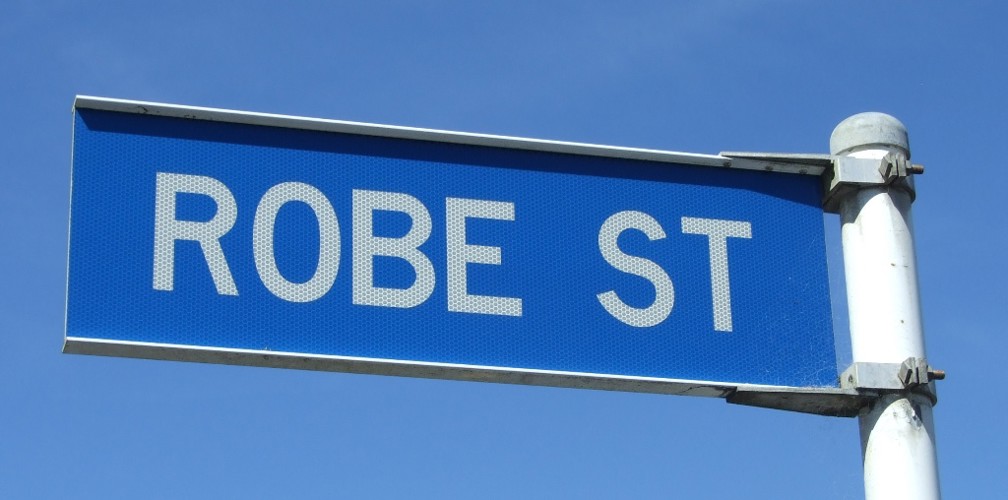 Robbies Lane sign (2013). Mike Gooch. Word on the street image collection.
Robbies Lane sign (2013). Mike Gooch. Word on the street image collection.
 Robbies Lane sign (2013). Mike Gooch. Word on the street image collection.
Robbies Lane sign (2013). Mike Gooch. Word on the street image collection.
Named after an unpopular governor of South Australia and an associate of Frederic Alonzo Carrington, Robe Street sounds like it should be draped with rich pageantry.
But no, Frederick Holt Robe was born into a military family in 1802, making a career in the army a virtual certainty for him. So, at 15, he joined the 84th Regiment as an ensign, rising to the rank of lieutenant in 1825. Transferring to the 87th Regiment in 1833, he was promoted to captain, and it was during this time that he became acquainted with Carrington working in the Ordnance Survey Department. No doubt he impressed enough for his name to be on one of the streets of Carrington's map of New Plymouth when he laid it out for the Plymouth Company.
Holt went on to serve in the Anglo-Turkish campaign in Syria during 1840 and 1841. There he was promoted to major and became assistant military secretary at Gibraltar in 1845.
That same year he was ordered to take the place of Governor George Grey in South Australia. He arrived in Adelaide on the Elphinstone and soon after sailed on to New Zealand in the company of Grey, with instructions to "look for advice and assistance". We are unsure how good the mentoring was, but he was sworn in as Lieutenant-governor of South Australia on 25 October 1845.
Thus began a difficult period for the state and its governor, largely brought on by his adherence to rigidly applied rules in a society in rapid change. He upset many forcing a bill through to institute mineral right reserves to the crown (royalties) for minerals found on crown land sold to settlers. He then withdrew the bill, but the damage was done.
Further upset was fermented when he linked state aid to religions on the basis of numbers of practitioners. Again he had to back track and was finding his position "distasteful", so he applied for a transfer. In 1847 he was appointed deputy quartermaster in Mauritius, but couldn't take up the position as he had to wait for his replacement, Henry Young, who didn't arrive until August 1848.
Returning to Britain, he lived out his life in the army, finally being promoted to major-general in 1862.
He died in London on 4 April 1871.
This story was originally published in the Taranaki Daily News.
Please do not reproduce these images without permission from Puke Ariki.
Contact us for more information or you can order images online here.